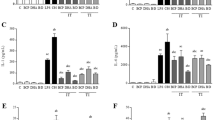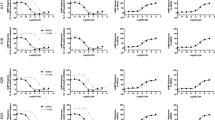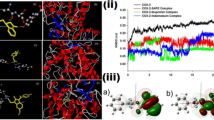Abstract
IN recent years much effort has been directed to the search for non-steroid anti-inflammatory substances which can be used in the therapy of rheumatic diseases and related conditions1. This communication reports the finding that a chemical family hitherto unexplored in this respect, namely, the arylacethydroxamic acids, includes several substances endowed with considerable anti-inflammatory and analgesic properties, and also a remarkably low degree of toxicity. A particularly interesting compound in this series was 4-butoxy-3-methyl-phenylacethydroxamic acid (I). In a comparative  investigation with known antiphlogistic compounds, using the Benitz and Hall carrageenin-induced abscess test in rats2, compound (I), in exactly the same dose, proved only slightly less active (c. half) than phenylbutazone (l,2-diphenyl-3,5-diketo-4-butylpyrazolidine), definitely more active than ‘Ibufenac’ (p-isobutylphenylacetic acid), and considerably more so than aspirin. The activity shown by compound (I) at the high dosage of 1 g/kg was as intense as that of the maximum tolerated dose of phenylbutazone (400 mg/kg) and considerably more so than that (10 mg/kg) of ‘Indomethacin’ (1-p-chlorobenzoyl-5-methoxyindolyl-3-acetic acid), which is the most efficient non-steroid antiphlogistic substance known so far. Compound (I) was also strongly active in the carrageenin-induced granuloma test in rats, whereas phenylbutazone and aspirin are known to behave poorly in this type of assay3.
investigation with known antiphlogistic compounds, using the Benitz and Hall carrageenin-induced abscess test in rats2, compound (I), in exactly the same dose, proved only slightly less active (c. half) than phenylbutazone (l,2-diphenyl-3,5-diketo-4-butylpyrazolidine), definitely more active than ‘Ibufenac’ (p-isobutylphenylacetic acid), and considerably more so than aspirin. The activity shown by compound (I) at the high dosage of 1 g/kg was as intense as that of the maximum tolerated dose of phenylbutazone (400 mg/kg) and considerably more so than that (10 mg/kg) of ‘Indomethacin’ (1-p-chlorobenzoyl-5-methoxyindolyl-3-acetic acid), which is the most efficient non-steroid antiphlogistic substance known so far. Compound (I) was also strongly active in the carrageenin-induced granuloma test in rats, whereas phenylbutazone and aspirin are known to behave poorly in this type of assay3.
This is a preview of subscription content, access via your institution
Access options
Subscribe to this journal
Receive 51 print issues and online access
$199.00 per year
only $3.90 per issue
Buy this article
- Purchase on SpringerLink
- Instant access to full article PDF
Prices may be subject to local taxes which are calculated during checkout
Similar content being viewed by others
References
See, for example, Shen, T. Y., Windholz, T. B., Rosegay, A., Witzel, B. E., Wilson, A. N., Willett, J. D., Holtz, W. J., Ellis, R. L., Matzuk, A. R., Lucas, S., Stammer, C. H., Holy, F. W., Sarett, L. H., Risley, A. A., Nuss, G. W., and Winter, C. A., J. Amer. Chem. Soc., 85, 488 (1963); Winder, C. V., Wax, J., Querubin, B. S., Jones, E. M., and McPhee, M. L., Arthr. and Rheum., 6, 36 (1963); Delbarre, F., Buu-Hoï, N. P., Jacquignon, P., Brouilhet, H., Kahan, A., and Marty, M., Medicina Experimentalis, 11, 325, 389 (1964).
Benitz, K. F., and Hall, L. M., Arch. Intern. Pharmacodyn., 144, 185 (1963).
See Whitehouse, M. W., in Progress in Drug Research, 8, 321 (1965).
Blake, L., Graene, M. L., and Sigg, E. B., Medicina Experimentalis, 9, 146 (1963).
Results evaluated according to the method of Litchfield and Wilcoxson; see, for example, Litchfield, J. T., The Evaluation of Drug Toxicity (Churchill, London, 1958).
Author information
Authors and Affiliations
Rights and permissions
About this article
Cite this article
BUU-HOÏ, N., LAMBELIN, G., GILLET, C. et al. Arylacethydroxamic Acids: a New Class of Potent Non-steroid Anti-inflammatory and Analgesic Substances. Nature 211, 752 (1966). https://doi.org/10.1038/211752a0
Issue date:
DOI: https://doi.org/10.1038/211752a0
This article is cited by
-
4-Allyloxy-3-chlorophenylacetic acid, a new type of analgesic, antipyretic and antiphlogistic drug
Die Naturwissenschaften (1969)



